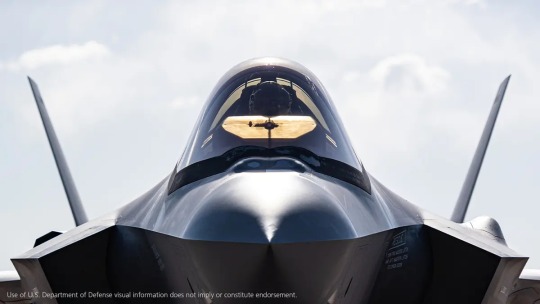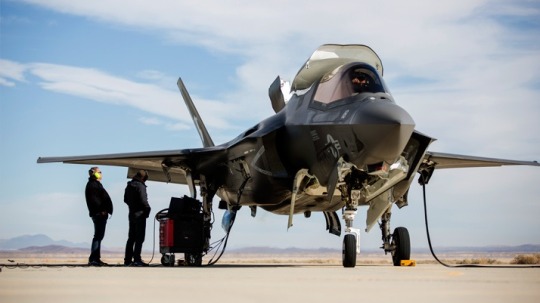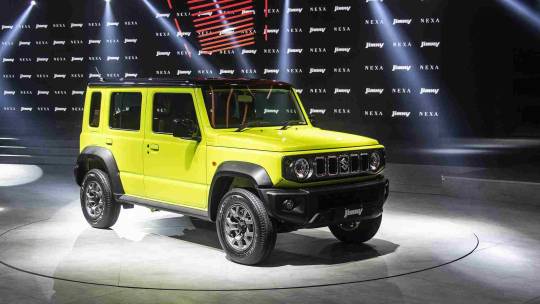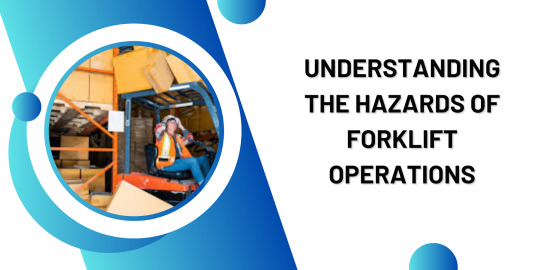#collision mitigation system
Explore tagged Tumblr posts
Text

Navigating the Future of ADAS with Starkenn Technologies in India
Navigating the Future of ADAS with Starkenn Technologies
Introduction
Advanced Driver Assistance Systems (ADAS) play a pivotal role in enhancing road safety and revolutionizing the driving experience. Starkenn Technologies, a leading provider of indigenous ADAS solutions, is committed to delivering cutting-edge technologies that enhance safety, convenience, and efficiency on the roads. Let’s delve into the key aspects of ADAS and explore how Starkenn is shaping the future of automotive safety.
Understanding ADAS
An ADAS is a suite of technologies designed to assist drivers in safe vehicle operation. By leveraging automated technology such as sensors and cameras, ADAS detects nearby obstacles and driver errors, responding promptly to mitigate risks. These systems can enable various levels of autonomous driving, making roads safer for everyone.
Starkenn’s ADAS Solutions
1. Collision Warning System
Starkenn Safe Collision Warning System: This radar-based system senses the surroundings and detects possible collisions. It alerts and warns the driver just in time, even in challenging conditions like heavy rainfall, fog, or low visibility.
2. Collision Mitigation System
Starkenn Brake Safe Collision Mitigation System: An active safety system that engages Starkenn’s patented* Automatic Emergency Braking (AEB) mechanism in critical collision scenarios. It significantly reduces the risk of fatal accidents with minimal false alarms.
3. Driver Monitoring Systems
Starkenn Attention Driver Monitoring System: Using on-the-edge computer vision and AI, this in-cabin solution continuously monitors the driver. It detects distractions, drowsiness, and over-speeding, issuing audio-visual alerts. Starkenn’s ‘Made in India’ technology minimizes accidents due to human error.
4. Telematics Fleet Management
Stark-I Virtual Eye (Cloud Platform): This advanced analytics solution provides real-time vehicle information, including live location, trip data, accident details, and incident videos. Fleet managers gain insights to optimize driving behavior and collect accident evidence.
Unique Selling Points (USPs)
Competitive Pricing: Starkenn offers cost-effective ADAS solutions.
Made in India: Starkenn’s expertise lies in hardware, firmware, AI/ML, and IoT technologies.
Field-Proven Algorithmics: Starkenn’s systems are reliable and effective.
All-Weather Protection: Starkenn’s ADAS works seamlessly in diverse weather conditions.
Impact and Vision
Starkenn Technologies has already saved over 1200 lives and prevented more than 350 accidents with its ADAS solutions. As the adoption of ADAS grows, Starkenn aims to make roads safer for all by continuing to innovate and drive positive change.
For more information, visit Starkenn Technologies.
#adas#adas for truck#collision warning system#collision avoidance system#collision mitigation system#collision mitigation braking system
1 note
·
View note
Text
Do you think the new blue/white headlights on cars are a dazzle hazard?
The prevalence of modern blue LED and halogen headlights (typically 4,000-6,500K) creates certain glare hazards, particularly due to their brightness, color spectrum, and design flaws. The following is a detailed analysis of these risks and their causes:
1. Blue-white light and glare mechanisms
Higher color temperature: Modern headlights, such as Philips WhiteVision H4 (4,100-4,200K) and aftermarket LEDs (up to 6,500K), have very little blue light below 6,500K, and increase the amount of blue light output above 6,500K as the color temperature increases, reaching pure blue light at 10,000K. Due to Rayleigh scattering, blue wavelengths (450-495 nm) are scattered more strongly in the human eye, amplifying the perception of glare by 3-5 times compared to higher color temperature halogen bulbs (3,000K).
Retinal effects: Blue light suppresses melatonin secretion and reduces night vision adaptation, especially for older drivers and those with cataracts or astigmatism.
2. Design and regulatory loopholes
LED power is too high: Cheap aftermarket LED kits (such as the 30,000 lumen bulb sold on DHgate) often exceed the brightness limit of road regulations, and the beam is improperly aligned, and LED bulbs that cannot adjust the light pattern cause dangerous scatter.
Height and alignment issues: SUVs and trucks with high-mounted headlights (70-90 cm ground clearance) will shine the beam directly onto the windshield of cars. Studies show that SUVs have 40% more glare complaints than cars.
Loose standards: US regulations (FMVSS 108) allow headlights to have a maximum brightness of 700,000 candela, while the EU limits it to 425,000 candela. Many countries lack strict color temperature restrictions.
3. Safety Risks and Driver Complaints
Accident Statistics: In the UK, 67% of drivers report slowing down due to glare, and 64% believe that overly bright headlights may have caused a collision.
Age-related Vulnerabilities: Drivers over 50 have 50% slower pupil constriction, making them more susceptible to sudden glare.
Confusion with Emergency Vehicles: Blue lights (e.g. 10,000K LEDs) may mimic police/emergency vehicle lights, e.g. Arizona bans blue headlights.
4. Mitigation Measures
Regulatory Updates: The EU will mandate adaptive matrix headlights (automatically adjust the beam) by 2027 to reduce glare. Japan plans to limit headlight color temperature to 5,000K.
Technology Solutions:
Laser-Assisted Beams: Precisely focused beam patterns (e.g. Audi’s laser system) minimize stray glare.
Anti-glare coating: High-end bulbs like Philips WhiteVision use UV-blocking quartz glass to reduce scatter.
Adjustable light pattern LEDs: High-end bulbs like SNGL use LED bulbs that can be adjusted by rotating the chuck to minimize dark areas and glare in the light pattern.
Driver education: Promote proper headlight height calibration checks and avoid non-compliant aftermarket kits.
Conclusion: Clear danger requires action While blue-white headlights can improve driver visibility, poor regulation of their intensity and color spectrum poses measurable risks. Solutions require stricter global standards, smarter adaptive technology, and public awareness. Until then, drivers should prioritize road-legal bulbs (such as 4,100K halogen lamps) and avoid aftermarket LED lamps with color temperatures exceeding 6500k.
For those affected, anti-glare glasses (yellow/amber lenses) or adjusting the rearview mirror to "night mode" can reduce discomfort. Regulators must urgently address this conflict between innovation and safety.

#led lights#car lights#led car light#youtube#led auto light#led headlights#led light#led headlight bulbs#ledlighting#young artist#car culture#race cars#car#classic cars#cars#suv#porsche#truck#supercar#automobile#automotive#chevrolet#automobiles#auto#car light#halogen headlights#halogen#halogen bulb#led light bulbs#color temperature
8 notes
·
View notes
Text
What Is the Safest Vehicle for Accidents?
When protecting yourself and your loved ones, the vehicle you drive matters. While no one expects to be in an accident, it’s always best to be prepared—and that starts with choosing a car built for safety. You're not alone if you’ve been wondering what the safest vehicle is in a crash.
As a Truck Accident Lawyer, I’ve seen firsthand how vehicle design and safety features can make a major difference in the outcome of a collision. In this article, we’ll break down what makes a vehicle safer, which models stand out, and what you should look for when shopping with safety in mind.
Why Vehicle Safety Matters
Accidents happen—even to the most cautious drivers. That’s why vehicle safety isn’t just a luxury; it’s a necessity. A car or truck engineered with safety in mind can reduce injuries, save lives, and give you peace of mind whenever you hit the road.
From advanced airbags to automatic emergency braking, today’s safety technology is a game-changer. Knowing what to look for can help you make an informed and confident choice.
How Are Safety Ratings Determined?
Before we dive into the safest vehicles, it helps to understand how safety is measured.
Two major organizations set the standard:
National Highway Traffic Safety Administration (NHTSA): Their 5-star safety ratings evaluate a vehicle’s performance in front, side, and rollover crashes.
Insurance Institute for Highway Safety (IIHS): Known for their strict testing, they rate vehicles based on crashworthiness, crash avoidance, and mitigation.
These independent assessments give a clear picture of how well a vehicle protects passengers during different types of collisions.
Key Safety Features to Look For
Not all safety features are created equal. Some go a long way in preventing accidents or minimizing injury if a crash does occur. Here are a few worth prioritizing:
Crumple Zones: Areas designed to absorb and dissipate impact energy during a crash.
Electronic Stability Control (ESC): Helps prevent skidding and loss of control, especially in poor driving conditions.
Advanced Airbag Systems: Multi-directional airbags that adjust deployment based on the severity of a crash.
Blind-Spot Monitoring: Alerts you when another vehicle is in your blind spot—especially helpful on highways.
Lane Departure Warning: This notifies you if you’re drifting out of your lane without signaling.
Automatic Emergency Braking (AEB): Can apply the brakes automatically to avoid or reduce the severity of a collision.
As someone who handles truck accident cases regularly, I can tell you—these features often mean the difference between a minor injury and something far more serious.
Safest Vehicles in a Crash: Top Picks
Whether you're buying new or upgrading, these vehicles are known for their strong safety performance and crash protection:
1. Toyota Tundra: Redesigned in 2022, the Toyota Tundra stands out as one of the safest full-size trucks. It comes equipped with Toyota Safety Sense, which includes features like lane tracing assist and adaptive cruise control.
2. Honda CR-V: This compact SUV continues to earn the IIHS Top Safety Pick+ rating year after year. With great visibility, solid crash scores, and active safety tech, it’s a top choice for families.
3. Subaru Outback: The Outback performs well in crash tests and real-world conditions with standard all-wheel drive and Subaru’s EyeSight Driver Assist Technology. It's also a great pick for drivers in snow-prone areas.
4. Toyota Camry: Don’t overlook sedans—the Camry blends style, performance, and safety. It consistently earns high safety ratings and comes with standard active safety features.
5. Mazda6: Praised for its sharp handling and upscale interior, the Mazda6 also shines in safety. It offers advanced driver assistance systems and high marks in crash prevention.
6. Ford F-150: As one of the best-selling trucks in the country, the F-150 is more than just muscle. It includes a range of safety tech, like pedestrian detection and rear cross-traffic alerts.
7. Chevrolet Silverado: This sturdy pickup performs well in crash tests and offers features like forward collision warning and lane-keeping assist. It's a solid option for anyone who needs both utility and protection.
Why You Might Need a Truck Accident Lawyer
While having a safe vehicle helps, it doesn’t make you invincible—especially in collisions involving large trucks. These cases can be legally complex due to the size of commercial vehicles, the severity of injuries, and liability concerns.
A Truck Accident Lawyer can help by:
Investigating the cause of the accident
Reviewing vehicle safety records and crash data
Dealing with insurance companies on your behalf
Pursuing full compensation for medical costs, lost wages, and more
If you've been in a crash—especially involving a truck—having experienced legal guidance can be essential.
What to Consider When Choosing a Safe Vehicle
Before you buy, keep these safety-minded tips in mind:
Always Check Safety Ratings: Visit NHTSA and IIHS websites to see how a vehicle scores in crash tests.
Test Drive With Safety in Mind: Make sure you feel comfortable with how the vehicle handles, especially with features like lane assist or braking systems.
Think About Your Lifestyle: Need more space for kids? Drive in winter weather? Consider what matters most to you and how safety features can support your routine.
Drive Safer, Live Better
Choosing a safe vehicle is one of the most practical steps to protect yourself and your passengers. While no car is accident-proof, some are better equipped to keep you safe when it matters most.
And if the unexpected happens? You deserve the support of someone who knows how to handle it.
Contact Abboud Law Firm today to speak with a dedicated Truck Accident Lawyer who can help you understand your rights and fight for the compensation you deserve.
Because safety doesn’t end when the crash is over—it continues with how you protect yourself afterward.
2 notes
·
View notes
Text
Professional Dashcam Installation Services to Enhance Fleet Safety

Fleet safety is more important than ever. With the rise in road incidents and the growing need to protect both drivers and assets, Dashcam Installations have become a vital tool for fleet operators. Whether you manage a small fleet or a large operation, having dashcams installed in your vehicles can greatly improve safety and reduce risks. Our professional Camera Installation in the Car provide you with reliable monitoring, real-time insights, and dependable incident recording to keep your fleet secure.
Why Dashcam Installations Are Crucial for Fleets
Dashcams do more than just record video. They offer an extra layer of security for fleet managers and drivers by capturing high-definition footage of the road and driver behavior. This data can be invaluable in preventing accidents, addressing risky driving habits, and protecting businesses from liability claims. Here are some key reasons why dashcams are essential for fleets:
1. Accurate Collision Recording
Accidents can happen at any time. Dashcams provide clear, real-time footage of incidents, which helps determine the cause of accidents and protects your business from false claims. This footage can be crucial in legal cases, ensuring that your drivers are exonerated when they are not at fault.
2. Driver Behavior Monitoring
Dashcams help fleet managers monitor driver behavior. Alerts for unsafe practices such as speeding, harsh braking, tailgating, or not wearing a seatbelt can be sent in real time. This monitoring helps reduce risky behavior and promotes safer driving habits.
3. Risk Mitigation
Dashcams reduce the risk of accidents and fraudulent insurance claims by providing clear video evidence. Having dashcams installed can also lead to lower insurance premiums for your fleet, saving your business money over time.
4. Compliance and GPS Integration
Many dashcam systems come with GPS tracking, allowing fleet managers to pinpoint the exact location of any critical event. This feature is essential for ensuring compliance with fleet safety standards and for optimizing routes and delivery times.
The Value of Fleet Dash Cams
Investing in Fleet Management Technology, particularly dash cameras with GPS tracking, is a critical decision for any business operating a fleet of vehicles. The decision often comes down to balancing the initial investment against the potential returns in terms of safety, efficiency, and operational improvement. Dash cameras, like JimiIoT's dashcam Dual-Channel Dashcam, provide a comprehensive solution that aligns with modern fleet management needs.
Dash cameras have become an essential tool in Fleet Tracking System Installation, providing real-time insights into road conditions, driver behavior, and incidents that can significantly impact your business. The dashcam stands out with its dual-channel video capability, offering a complete view of both the road ahead and the vehicle's interior. This technology not only ensures safety but also contributes to enhancing operational efficiency.
Key Benefits of Investing in the Dashcam
Accident Reduction and Evidence Collection
The dashcam captures high-quality footage in real time, which can be crucial during accidents. This footage can quickly resolve disputes, expedite insurance claims, and protect your company from fraudulent claims. Concrete evidence from dash cams can lead to lower insurance premiums and overall cost reductions.
Driver Behavior Monitoring
One significant advantage of the dashcam is its ability to monitor driver behavior. By capturing instances of speeding, harsh braking, and other risky actions, fleet managers can identify patterns and take corrective measures. Over time, this results in a safer driving culture within your fleet.
Maintenance Cost Reduction
Real-time monitoring through the dashcam can alert fleet managers to potential vehicle issues before they become critical. Addressing problems early reduces the chances of costly breakdowns and extends your vehicle's lifespan. Data-driven preventive maintenance keeps your fleet in top condition.
Enhanced Productivity
With advanced tracking and monitoring capabilities, the dashcam enables better route planning and reduces unnecessary downtime. Improved scheduling leads to higher productivity, timely deliveries, and increased customer satisfaction.
Driver Training and Development
Video footage from the dashcam can be a valuable training tool. Reviewing incidents allows managers to provide targeted feedback, helping drivers improve their skills. This ongoing training fosters a more competent driving team, further reducing risks and operational costs.
Litigation Protection
In legal disputes, having clear, objective footage from the dashcam is invaluable. It can protect your business from false claims and prevent costly settlements, safeguarding your reputation and financial stability.
Insurance Discounts
Many insurance providers recognize dashcams role in reducing risks and offer discounts to fleets that use them. The dashcam's advanced features can help your business qualify for these discounts, further offsetting the initial investment.
Regulatory Compliance
Staying compliant with industry regulations is essential for avoiding fines. The dashcam ensures your fleet operates within legal parameters by providing verifiable data on driver behavior, vehicle location, and operational conditions.
Data-Driven Decision Making
The dashcam is more than a camera; it's a powerful tool for collecting and analyzing data. Insights gained from this data help fleet managers make informed decisions to improve operational efficiency, reduce costs, and increase profitability.
Secure Your Fleet with Our Dashcam Installation Services
When it comes to fleet safety, every detail matters. Proper dashcam installation can make a significant difference in protecting your drivers, reducing risks, and ensuring compliance with safety standards. Our team is dedicated to providing high-quality dashcam installation services that meet the unique needs of your fleet.
By choosing our professional services, you can expect:
Expert installation: Ensuring optimal performance and reliability.
Customized solutions: Tailored to your fleet size and needs.
Ongoing support: We’re here to help you maintain your dashcam systems.
Don’t leave your fleet’s safety to chance. Contact us today to schedule your dashcam installation and take the first step toward a safer, more efficient fleet. Protect your drivers, safeguard your business, and gain peace of mind with our expert dashcam installation services.
The Role of Orbital Installs
Orbital Installation Technologies plays a crucial role in providing professional dashcam installation services that ensure your fleet’s safety systems are functioning at their best. Our experienced team specializes in installing a wide range of dashcam systems, from single-camera setups to advanced multi-channel solutions with GPS tracking and cloud connectivity. We understand the importance of precision and reliability in dashcam installations, which is why we tailor our services to fit your fleet's unique needs.
With years of expertise, Orbital Installs ensures that every dashcam is properly positioned and configured to capture critical footage. Our commitment to quality installation means fewer technical issues, better performance, and greater peace of mind for fleet operators. Trust Orbital Installs to handle your dashcam installation professionally and efficiently, so you can focus on running a safer and more productive fleet.
FAQs
1. What types of vehicles can you install dashcams in? We can install dashcams in all types of vehicles, including cars, vans, trucks, and buses. Our team has experience with a variety of vehicle sizes and configurations to ensure a seamless installation process.
2. How long does a typical dashcam installation take? The installation time varies depending on the type of system and the vehicle. On average, a basic dashcam installation takes about 1-2 hours. More complex multi-camera systems may require additional time.
3. Can I access the dashcam footage remotely? Yes, many modern dashcam systems offer cloud-connected features that allow you to access footage remotely. This enables you to review incidents in real-time from any location with an internet connection.
4. Do you provide maintenance and support after the installation? Absolutely! We provide ongoing support to ensure your dashcam systems continue to operate efficiently. If you encounter any issues, our team is available to help with troubleshooting and maintenance.
#autos#entrepreneur#automobile#boston fleet#fleet services#fleetsolutions#orbitalinstallationstechnologies#dashcam#camera#dash cam#installation#fleet management solution#eld mandate#apc#Car camera#car camera#auto#truck
3 notes
·
View notes
Note
How many iterations of the sentry did you have to make to perfect them?
" Well, perfectin' the sentry wasn't somethin' that happened overnight, " Engineer began, his tone taking on a thoughtful drawl. " There were plenty o' iterations to get it where it is now — every level, every function, built on the last through a good deal of trial and error. "
" Y'see, these sentries go way back to my granddaddy, Radigan Conagher. He laid the groundwork for the design — brilliant man. But what I'm workin' with now? That's been rebuilt, improved, and tuned to fit the fightin' we do today. My pa, though, decided not to stick to those designs. Don't ask me why; fella was always been eccentric. He'd painted a face on his sentries — for fun, I s'pose. "
" The Level 1 model was all about simplicity — semi-automatic firin', single-barrel system. Had to fine-tune the motion tracker so it wouldn't waste ammo on tumbleweeds or shadows. That took some work. Early prototypes? They'd lock onto anything that moved, includin' teammates. Let's just say I went through a few repairs on account o' friendly fire. Level 1 sentry, it's designed to deploy fast — give dem enemies something to chew on and hold the line. Simple, sturdy, and gets the job done. "
" Them retractable rear legs? Key to keepin' it stable. Gunpowder explosions from each round generate recoil — a force that'd send it tumblin' like a drunk Demo if it weren't for those legs absorbin' the momentum. That's what we engineers call inelastic collision mitigation. But when you upgrade to Level 2 or 3, that recoil ramps up, so the legs extend further, givin' it a wider base to keep it steady under heavier firepower. "
" Now, compared to my pa's sentries, there's a heap o' differences. Them old models, well, they were somethin' special for their time, but they didn't have the modular design or upgrade paths we've got now. Back then, the sentry had a more basic motion-tracking system — heck, I even took one apart once, just to see what made it tick. Lemme tell ya, it could shoot on its own if somethin' wandered into its line of sight — thanks to them sensors or tracking systems. But the rotation? That had to be done manually. Ain't like what I've got here. This thing? It covers a lot more ground, shoots anything that steps into its perimeter — automatic, no need for no manual control. Took me a few months to get it right, but that there was one o' the biggest upgrades from them old designs. "
" Level 2 was where things got real tricky, " he continued. " Dual rotational minigun barrels and a cyclical ammo feed system — that required a whole new way of connectin' the main power supply to the ammo housing. The first few models didn't last long under pressure. Overheatin' was one of the main issue — those dual barrels'd warp or jam without proper ventilation, so I added a coolant system to circulate fluid through the barrels and keep 'em from burnin' out. "
" Level 3? That's when rockets came into the picture — target-guided, too. Addin' that rocket arm meant reworkin' the rear housin’ to handle the extra weight and firepower. But the hardest part? Power balance. Had to make sure them rockets could fire while keepin' the barrels operatin' without a hitch. Blew up more than one o' these tryin' to get it right. "
" These sentries were top-heavy, so I had to make a few adjustments during the iteration process — see why my pa didn't stick with them designs. I had to use heavier steel for them legs, get that center of gravity as low as I could — while makin' sure it don't add too much weight to the buildin'. Ain't easy carryin' this whole contraption across the battlefield, y'know? "
" But every iteration brought me closer to what you see now. Ain’t perfect — still gotta keep a close eye on it to fend off sappers and keep it in good repair — but I reckon it's the most reliable thing on the battlefield. "
With a grin, he added, " So, if I had to put a number to it? I'd say at least a couple iterations. But perfection’s an ongoing process, y'know? Always somethin' to improve. "
#( answered. ) that contract was all hat and no cattle!#( headcanon. ) good news boys! i drafted up a blueprint of the other team's asses and it looks like all our boots are gonna fit up there!#anonymous#[ anon i can go even longer explaining sentry guns ]#[ anon i think i may have hit 700 words explaining this ]#[ anon im sorry you have to read all this even tho i doubt you'd be coming back to this blog after asking one question ]#[ i spent an ungodly amount of time writing this dumb thing ]#tf2 engineer#tf2 headcanon#tf2 headcanons#tf2 engineer headcanon
4 notes
·
View notes
Text
This story originally appeared on Grist and is part of the Climate Desk collaboration.
On a 20-acre parcel outside the tiny Southern California town of New Cuyama, a 1.5-megawatt solar farm uses the sun’s rays to slowly charge nearly 600 batteries in nearby cabinets. At night, when energy demand rises, that electricity is sent to the grid to power homes with clean energy.
To make renewable energy from intermittent sources like solar and wind available when it is most needed, it’s becoming more common to use batteries to store the power as it’s generated and transmit it later. But one thing about the Cuyama facility, which began operations this month, is less common: The batteries sending energy to the grid once powered electric vehicles.
The SEPV Cuyama facility, located about two hours northeast of Santa Barbara, is the second hybrid storage facility opened by B2U Storage Solutions. Its first facility, just outside Los Angeles, uses 1,300 retired batteries from Honda Clarity and Nissan Leaf EVs to store 28 megawatt-hours of power, enough to power about 9,500 homes.
The facilities are meant to prove the feasibility of giving EV batteries a second life as stationary storage before they are recycled. Doing so could increase the sustainability of the technology’s supply chain and reduce the need to mine critical minerals, while providing a cheaper way of building out grid-scale storage.
“This is what’s needed at massive scale,” said Freeman Hall, CEO of the Los Angeles-based large-scale storage system company.
Electric vehicle batteries are typically replaced when they reach 70 to 80 percent of their capacity, largely because the range they provide at that point begins to dwindle. Almost all of the critical materials inside them, including lithium, nickel, and cobalt, are reusable. A growing domestic recycling industry, supported by billions of dollars in loans from the Energy Department and incentives in the Inflation Reduction Act, is being built to prepare for what will one day be tens of millions of retired EV battery packs.
Before they are disassembled, however, studies show that around three-quarters of decommissioned packs are suitable for a second life as stationary storage. (Some packs may not have enough life left in them, are too damaged from a collision, or are otherwise faulty.)
“We were seeing the first generation of EVs end their time on the road, and 70 percent or more of those batteries have very strong residual value,” said Hall. “That should be utilized before all those batteries are recycled, and we’re just deferring recycling by three, four, or five years.”
Extending the useful life of EV batteries mitigates the impact of manufacturing them, said Maria Chavez, energy analyst at the Union of Concerned Scientists.
“The whole point of trying to deploy electric vehicles is to reduce emissions and reduce the negative impacts of things like manufacturing and extractive processes on our environment and our communities,” Chavez told Grist. “By extending the life of a battery, we reduce the need for further exploitation of our natural resources, we reduce the demand for raw materials, and we generally encourage a more sustainable process.”
Just as batteries have become crucial to reducing emissions from transportation, they’re also needed to fully realize the benefits of clean energy. Without stationary storage, wind and solar power can only feed the grid when the wind is blowing or the sun is shining.
“Being able to store it and use it when it’s most needed is a really important way to meet our energy needs,” Chavez said.
The use of utility-scale battery storage is expected to skyrocket, from 1.5 gigawatts of capacity in 2020 to 30 gigawatts by 2025. EV packs could provide a stockpile for that buildout. Hall said there are already at least 3 gigawatt-hours of decommissioned EV packs sitting around in the United States that could be deployed, and that the volume of them being removed from cars is doubling every two years.
“We’re going from a trickle when we started four years ago to a flood of batteries that are coming,” he said.
B2U says its technology allows batteries to be repurposed in a nearly “plug-and-play fashion.” They do not need to be disassembled, and units from multiple manufacturers—B2U has tested batteries from Honda, Nissan, Tesla, GM, and Ford—can be used in one system.
The packs are stored in large cabinets and managed with proprietary software, which monitors their safety and discharges and charges each battery based on its capacity. The batteries charge during the day from both the solar panels and the grid. Then B2U sells that power to utilities at night, when demand and prices are much higher.
Hall said using second-life batteries earns the same financial return as new grid-scale batteries at half the initial cost, and that for now, repurposing the packs is more lucrative for automakers than sending them straight to recyclers. Until the recycling industry grows, it’s still quite expensive to recycle them. By selling or leasing retired packs to a grid storage company, said Hall, manufacturers can squeeze more value out of them.
That could even help drive down the cost of electric vehicles, he added. “The actual cost of leasing a battery on wheels should go down if the full value of the battery is enhanced and reused,” he said. “Everybody wins when we do reuse in a smart fashion.”
B2U expects to add storage to a third solar facility near Palmdale next year. The facilities are meant to prove that the idea works, after which B2U plans to sell its hardware and software to other storage-project developers.
At the moment, though, planned deployment of the technology is limited. B2U predicts only about 6 percent of decommissioned EV batteries in the US will be used for grid-scale storage by 2027.
“People are skeptical, and they should be, because it’s hard to do reuse of batteries,” said Hall. “But we’ve got a robust data set that does prove reliability, performance, and profitability. We’re at a point where we really can scale this.”
14 notes
·
View notes
Text

Exploring Innovative Technology and Future-proofing in High-End Model Cars
In the rapidly evolving automotive industry, high-end model cars are at the forefront of innovation, integrating cutting-edge technology and future-proofing features to meet the demands of discerning consumers. Let's delve into the innovative technology and future-proofing strategies that define high-end model cars.
Advanced Safety and Driver-Assist Systems
Automated Driving Capabilities: High-end model cars are equipped with advanced automated driving features, such as adaptive cruise control, lane-keeping assistance, and automated parking, paving the way for a future of self-driving capabilities.
Collision Avoidance Technology: Utilizing radar, lidar, and camera systems, these cars incorporate collision avoidance technology to enhance safety, mitigate accidents, and protect both occupants and pedestrians.
Advanced Driver Monitoring: Cutting-edge driver monitoring systems use AI and advanced sensors to detect driver drowsiness, distraction, and provide alerts, ensuring a safer driving experience.
Sustainable Power-trains and Electrification
Electric and Hybrid Technology: High-end model cars embrace electrification with sophisticated electric and hybrid powertrains, offering enhanced efficiency, lower emissions, and a glimpse into the future of sustainable mobility.
Fast-Charging Infrastructure: These cars are designed to support fast-charging capabilities, reducing charging times and enhancing the practicality of electric driving.
Regenerative Braking: Incorporating regenerative braking technology, high-end models capture and store energy during braking, maximizing efficiency and range.
Connectivity and Infotainment Evolution
5G Connectivity: Future-proofing high-end model cars involves integrating 5G connectivity, enabling faster data transfer, low-latency communication, and unlocking new possibilities for in-car entertainment and communication.
Enhanced Infotainment Interfaces: These cars feature intuitive, AI-powered infotainment interfaces that learn from user behavior, anticipate preferences, and seamlessly integrate with personal devices and services.
Over-the-Air Updates: Future-proofing includes over-the-air software updates, ensuring that the car's systems and features remain up to date with the latest enhancements and security patches.
Environmental Sustainability and Luxury
Sustainable Materials: High-end model cars are incorporating sustainable materials in their interiors, showcasing a commitment to environmental responsibility without compromising luxury and comfort.
Energy-Efficient Climate Control: Utilizing advanced climate control systems, these cars optimize energy usage to maintain a comfortable interior environment while minimizing energy consumption.
Adaptive Lighting Technology: Future-proofing extends to adaptive lighting systems that improve visibility, enhance safety, and reduce energy consumption through advanced LED and laser technologies.
High-end model cars are at the vanguard of innovation, embracing advanced technology and future-proofing strategies to deliver unparalleled driving experiences.
From automated driving capabilities to sustainable power-trains, enhanced connectivity, and a commitment to environmental sustainability, these cars are shaping the future of automotive luxury and performance, setting new standards for innovation and excellence in the automotive industry.
In the ever-evolving landscape of car shipping, staying ahead with innovative technology is crucial for a safe and efficient experience. Explore the latest advancements for a safe direct car shipping reviews and how they can future-proof your transportation needs.
youtube
4 notes
·
View notes
Text

BAE Systems tests on the F-35 its next generation of vehicle management computer
Fernando Valduga By Fernando Valduga 09/08/2023 - 16:00 in Military
BAE Systems' next-generation vehicle management computer has been successfully tested in flight on the F-35 Lightning II aircraft.
The test demonstrated a technological update for all three variants of the F-35 that will increase computer performance and solve obsolescence problems. The tests took place at Patuxent Naval Air Station and Edwards Air Base.
BAE Systems' Vehicle Management Computer (VMC) allows advanced control modes and improves mission efficiency and safety. Its distributed architecture allows the aircraft to operate reliably with greater mission effectiveness in demanding environments. The updated VMC will not only help mitigate obsolescence, but will also improve the safety, maintainability and availability of the aircraft for the U.S. military and its allies.

"The VMC provides the high integrity processing necessary to implement the advanced control algorithms that allow the critical missions of this platform," said Corin Beck, director of Military Aircraft Systems for Aircraft Controls and Solutions at BAE Systems. "This update took advantage of BAE Systems' technological roadmap to ensure that the F-35 advances its mission management and flight control capabilities today and in the future."
This technological update incorporates an advanced quad-core processor for an efficient and high-performance solution. The new level of computing power allows additional capabilities of the aircraft, while reducing the pilot's workload. It also adds advanced mission features to the VMC, such as the Joint Precision Approach and Landing System (JPALS) and the Automatic Ground Collision Prevention System (AGCAS).
BAE Systems has more than 40 years of experience in the development and integration of flight control technology for military and commercial platforms. Work at VMC takes place at the company's state-of-the-art engineering and manufacturing facilities in Endicott, New York.
BAE Systems is an important global partner of Lockheed Martin in the F-35 program. The company supplies the VMC, electronic warfare system, active inceptor control system and rear fuselage for each F-35 in manufacturing facilities in the US, UK and Australia. The company also offers sustainability services, technical support and training to keep the F-35s ready for the mission.
Tags: Military AviationBAE SystemsF-35 Lightning II
Sharing
tweet
Fernando Valduga
Fernando Valduga
Aviation photographer and pilot since 1992, he has participated in several events and air operations, such as Cruzex, AirVenture, Daytona Airshow and FIDAE. He has work published in specialized aviation magazines in Brazil and abroad. Uses Canon equipment during his photographic work throughout the world of aviation.
Related news
SAAB
Saab opens new radar production plant in the United Kingdom
08/09/2023 - 15:00
MILITARY
RNLAF expands use of Elbit Systems' DIRCM for VIP aircraft
08/09/2023 - 14:00
Three of the six F-35A fighters of the Royal Australian Air Force en route to Japan, where they will participate in the joint exercise Bushido Guardian. (Photo: Australian DoD)
MILITARY
Exercise Bushido Guardian brings together Japan and Australia
08/09/2023 - 12:00
MILITARY
Boeing earns $474.5 million to provide EW systems for the Japanese F-15J
08/09/2023 - 11:00
MILITARY
The US should store nuclear weapons in Poland, says report
08/09/2023 - 08:35
MILITARY
IMAGES: Lockheed Martin presents the first F-16 Block 70 for Slovakia
07/09/2023 - 19:06
8 notes
·
View notes
Link
It’s been another great year at NASA’s Ames Research Center in California’s Silicon Valley. Join us as we review some of the highlights of the science, engineering, and innovation from 2023. Announcing a New Innovation Hub Planned for NASA Research Park at Ames NASA Berkeley Space Center is a proposed new campus of the University of California, Berkeley, and an innovation hub for research and advances in astronautics, aeronautics, quantum computing, climate studies, and more. Planning to join Ames as a tenant of our NASA Research Park in Silicon Valley, the new campus aims to bring together researchers from the private sector, academia, and the government to tackle the complex scientific, technological, and societal issues facing our world. Mapping Water Distribution on the Moon’s South Pole NASA Using data collected by the now-retired Stratospheric Observatory for Infrared Astronomy (SOFIA), researchers shared the first detailed, wide-area map of water distribution on the Moon. Understanding how much water lies beneath the lunar surface, and how it’s distributed, will help guide future missions like VIPER, as well as prospective sites for human habitats. Colliding Moons May Have Formed Saturn’s Rings NASA New research suggests Saturn’s icy moons and rings were formed by a collision a few hundred million years ago, creating debris that gathered into the planet’s dusty, icy rings or clumped together to form moons. NASA and Airlines Partner to Save Fuel and Reduce Delays NASA/James Blair This year, NASA partnered with five major U.S. airlines on an air traffic decision-making tool that saved more than 24,000 pounds of jet fuel in 2022 for flights departing from Dallas-Fort Worth International Airport and Dallas Love Field Airport. Partners include American Airlines, Delta Air Lines, JetBlue Airways, Southwest Airlines and United Airlines. NASA Leaders View Climate Science, Wildfire Innovations at Ames NASA/Dominic Hart NASA’s top leadership, industry experts, and legislative officials visited Ames in April to learn about about the center’s climate science efforts and innovations in aeronautics that will help scientists and engineers better understand climate change and mitigate natural disasters like wildland fires. Starling Takes Flight Blue Canyon Technologies/NASA In July NASA’s Starling mission, managed at Ames, launched four CubeSats into low-Earth orbit to test robotic swarm technologies for space. You can track mission milestones via the Small Satellite Missions blog, and follow the mission live in NASA’s Eyes on the Solar System 3D visualization. NASA’s First Robotic Moon Rover NASA/Robert Markowitz This year engineers began assembling NASA’s first robotic Moon rover, VIPER — short for the Volatiles Investigating Polar Exploration Rover — and the agency is giving the public a front row seat to watch along as the rover takes shape. While individual components, such as the rover’s science instruments, lights, and wheels, were assembled and tested, the VIPER team also completed software development, mission planning, and tricky tests of the rover’s ability to drive off the Astrobotic Griffin lunar lander and onto the lunar surface. Bringing Home Ancient Space Rocks NASA/Keegan Barber NASA’s OSIRIS-REx mission – short for the Origins, Spectral Interpretation, Resource Identification, and Security-Regolith Explorer – returned to Earth in Sept. 2023, bringing with it extraterrestrial rocks and dust that it scooped up from an asteroid estimated to be 4.5 billion years old. Ames contributed to the spacecraft’s heat shield, anti-contamination systems, post-landing sample curation, and more. Preparing to Send Yeast to the Moon’s Surface for Astronaut Health NASA/Dominic Hart NASA’s plans to explore the Moon and eventually go to Mars will bring humans deeper into space for longer duration missions than ever before. These extended missions beyond low Earth orbit pose certain health risks to astronauts. The Lunar Explorer Instrument for Space Biology Applications team is preparing an experiment to study yeast’s biological response to the lunar environment to help understand and mitigate health risks for astronauts. X-59 Team Moves Toward First Flight in 2024 Lockheed Martin/Gary Tice This year, NASA’s X-59 team installed the finishing touches to the aircraft’s tail structure and moved it from its assembly facility to the flight line to perform structural testing. The X-59 quiet supersonic aircraft will take its first flight in 2024. Celebrating a Stellar Year for Webb Telescope Science NASA, ESA, CSA, STScI, and S. Crowe (University of Virginia) The James Webb Space Telescope’s Near-Infrared Camera instrument produced a feast for the eyes with a view into a star-forming region, named Sagittarius C, in the heart of the Milky Way. The image reveals a portion of the dense center of our galaxy in unprecedented detail, including never-before-seen features astronomers have yet to explain. Supercomputer Simulations Lead to Air and Space Innovations NASA Simulations and models developed using technology at the NASA Advanced Supercomputing Facility (NAS) help researchers and engineers develop innovations in air and space. Modeling turbofan engines could lead to designs that reduce engine noise and improve efficiency by understanding where noise is generated inside the machine. S-MODE Sails the Seas and Soars through the Sky NASA/Avery Snyder The Sub-Mesoscale Ocean Dynamics Experiment (S-MODE) logged its final field expedition, and they took a team from the TODAY Show along for the ride. S-MODE combined airborne instruments, research ships, and autonomous ocean gliders to get an unprecedented look at how gas and heat exchange at the ocean’s surface impacts Earth’s climate. From Intern to Astronaut, and Back to Ames NASA/Dominic Hart NASA astronaut Jessica Watkins, who was once an intern at Ames, returned to the Bay Area in Feb. 2023 to visit with local elementary schools and speak with Ames employees. Watkins started her career with NASA at Ames, where she conducted research on Mars soil simulant supporting the Phoenix Mars Lander mission. Second Gentleman Joins East Bay Kids for STEM Activities NASA/Dominic Hart Nearly 100 East Bay kids and their families got to experience the thrill of “launching a rocket” and “making clouds” at a fun-filled STEM event hosted in honor of Women’s History Month at the East Oakland Youth Development Center in Oakland, California, in March 2023. Second Gentleman Douglas Emhoff, NASA Ames Research Center Director Dr. Eugene Tu, and NASA astronaut Dr. Yvonne Cagle joined kids at the Manzanita Community School for hands-on activities and to distribute approximately 500 STEM Artemis Learning Lunchboxes aimed to inspire the Artemis generation to learn about NASA’s Artemis Program. Top Leaders in Our Midst Hailed from the White House and Australia NASA/Dominic Hart In January, U.S. President Joe Biden landed at Moffett Federal Airfield, at Ames, on his way to visit storm-damaged regions in the state. Research conducted at our Silicon Valley center could help predict extreme climate-related weather events. Later in the spring, Vice President Kamala Harris arrived at Moffett before delivering remarks at a local company, and leaders of the Australian Space Agency visited Ames to learn about the center’s missions supporting NASA’s Artemis program, including the VIPER Moon rover, which will launch to the lunar South Pole in late 2024.
2 notes
·
View notes
Text
Unlocking the Mysteries of Satellites: How They Work 🛰️
Satellites orbiting high above Earth have become an integral part of our modern world. From facilitating global communications to monitoring the environment and enabling GPS navigation, satellites silently work their magic in the sky. But have you ever wondered how these marvels of technology actually work? Let's take a journey into the cosmos and explore the fascinating world of satellites.
1. The Launch: It all begins on Earth's surface with a spectacular rocket launch. Satellites are carefully positioned atop powerful launch vehicles. Once the rocket reaches the desired orbit, the satellite is released and begins its journey around our planet.
2. Orbit Selection: Satellites can be placed in various orbits depending on their purpose. Low Earth Orbit (LEO), Medium Earth Orbit (MEO), and Geostationary Orbit (GEO) are common choices. LEO satellites orbit close to Earth, while GEO satellites stay fixed above a specific location, ideal for telecommunications.
3. Solar Power: Most satellites are equipped with solar panels that capture energy from the Sun. This energy is converted into electricity, powering the satellite's systems and instruments. Excess power is stored in batteries for use during eclipse (when the satellite passes through Earth's shadow).
4. Communication: Communication satellites are the backbone of global connectivity. They receive signals from ground stations, amplify them, and transmit them back to Earth. This relay of information allows us to make phone calls, browse the internet, and watch TV across continents.
5. Earth Observation: Satellites equipped with sensors and cameras capture detailed images of our planet. These images are used for weather forecasting, environmental monitoring, disaster management, and even archaeological research.
6. Navigation and GPS: The Global Positioning System (GPS) relies on a constellation of satellites in MEO. These satellites emit signals that GPS receivers on Earth use to determine precise locations. This technology has revolutionized navigation and mapping.
7. Scientific Research: Satellites contribute to various scientific endeavors. They monitor climate change, study the universe through space telescopes, and help us better understand Earth's oceans, atmosphere, and geological processes.
8. Data Transmission: Satellites transmit vast amounts of data daily. They send and receive signals through radio waves or microwaves, ensuring seamless communication between ground stations and other satellites.
9. Orbital Adjustments: To maintain their positions and orbits, satellites use thrusters or ion engines. These engines provide the necessary propulsion for altitude adjustments, station-keeping, and orbital corrections.
10. Satellite Lifespan: Satellites have a finite lifespan. Once their systems degrade or run out of fuel, they become space debris or are intentionally deorbited to burn up in Earth's atmosphere.
11. Space Junk Mitigation: With thousands of satellites in orbit, space agencies work to reduce space debris and collisions. This involves controlled deorbit maneuvers and international agreements.
12. Constant Monitoring: Ground stations around the world track satellites' positions, health, and performance. This monitoring ensures that satellites remain operational and can respond to any issues promptly.
From facilitating instant communication to expanding our knowledge of the cosmos, satellites play a pivotal role in our interconnected world. They are a testament to human ingenuity and our insatiable curiosity about the universe. So, the next time you look up at the night sky, remember that among the stars, countless satellites silently carry out their missions, connecting our planet in remarkable ways. 🌍📡🛰️ #Satellites #SpaceTechnology #Exploration
2 notes
·
View notes
Text
Maruti Suzuki Jimny

Maruti Suzuki Jimny: A Compact SUV Powerhouse
In the world of compact SUVs, the Maruti Suzuki Jimny stands tall as a true powerhouse. This rugged and versatile vehicle has won hearts all over the globe with its charming design, off-road capabilities, and practicality. Initially introduced in 1970, the Jimny has undergone several transformations over the years, and the latest generation continues to impress enthusiasts and everyday drivers alike.For more content visit peaktag
Design and Aesthetics:
The Jimny boasts a design that is both retro and contemporary, making it an eye-catching presence on the road. Its boxy silhouette harks back to its roots as a compact off-roader, while the modern touches keep it in line with contemporary SUVs. Its compact dimensions make it perfect for urban commuting, yet it can handle challenging terrains with ease.
The front fascia features a distinctive grille with vertical slats, flanked by round headlamps that exude a sense of character. Robust wheel arches, functional roof rails, and a rear-mounted spare wheel complete the rugged appearance, emphasizing its adventurous spirit.
Performance and Capability:
Under the hood, the Jimny packs a punch with its robust performance capabilities. It typically comes equipped with a capable 1.5-liter gasoline engine, delivering a balance of power and fuel efficiency. The engine is mated to either a manual or automatic transmission, offering a smooth driving experience.
Where the Jimny truly shines is off the beaten path. Its compact size and lightweight nature make it agile and nimble on tricky trails. Additionally, the vehicle's All-Wheel Drive (AWD) system and high ground clearance enable it to conquer challenging terrains, be it steep inclines, rocky surfaces, or muddy paths. For those seeking adventure beyond the city limits, the Jimny proves to be an ideal companion.
Interior and Comfort:
Though the Maruti Suzuki Jimny is designed to tackle the outdoors, its interior doesn't compromise on comfort and convenience. Despite its compact dimensions, the cabin is thoughtfully designed to accommodate passengers comfortably. The seats provide ample support for long journeys, and the overall layout exudes a sense of simplicity.
The infotainment system includes modern features like touchscreen displays, smartphone connectivity, and navigation options, enhancing the overall driving experience. The clever utilization of space ensures sufficient cargo room, making it suitable for both daily errands and weekend getaways.
Safety and Technology:
Maruti Suzuki has paid significant attention to safety in the Jimny. The vehicle is equipped with essential safety features like multiple airbags, anti-lock braking system (ABS), electronic stability control (ESC), hill-start assist, and more. These features instill confidence in drivers, regardless of the driving conditions.
In terms of technology, the Jimny keeps up with the times. It incorporates various driver-assistance systems, such as adaptive cruise control, lane-keeping assist, and collision mitigation, to enhance overall safety and ease of driving.
Global Popularity:
The Maruti Suzuki Jimny has gained a massive fan base worldwide, especially among SUV enthusiasts and off-road aficionados. Its blend of practicality, performance, and charming design has made it a top choice for adventure seekers and urban dwellers alike. The vehicle's success has led to various international awards and accolades, further solidifying its reputation as a formidable compact SUV.You should also read about iphone 15
2 notes
·
View notes
Text
youtube
Here is a much better video that covers the minute or two before anything went wrong, the first power outage, the emergency system coming on and trying to work, the black smoke from the ship's tower, the second power failure, and if you look carefully, you can see the traffic on the bridge stop, and virtually every car/truck make it to the other side before the collapse.
As someone who has contacts with both FEMA and DEMA, and a whole bunch of folks in the general sphere of emergency management in that part of the country, here's some additional info:
What that top video clip doesn't show is that the entire ship lost power twice- emergency power did start to kick in, but between the current, the ship's own momentum (the laws of fucking physics, which cannot be circumvented no matter how much you really want to), whatever was causing the thick plumes of black smoke to come from the ship's tower, and the second power failure, the crew was not able to prevent a collision...
But they did everything they could to mitigate the damage. They confirmed a Mayday signal with the appropriate authorities, they contacted the MD DOT (Maryland Dept of Transportation) as soon as they could, and because of that, there were police crews immediately on both ends of the bridge stopping as much thru-traffic as possible.
There was a construction crew and attendant vehicles still on the bridge, and we know there was chatter between law enforcement personnel regarding getting another car out to get warning to the construction crew.
If the responders at either end had gone to warn them, then traffic would have been allowed on the bridge, and the casualties would have been much higher.
As it is, there are still a few people listed as missing, and at least one in medical care and considered to be in "very serious condition"- but this could have been infinitely worse.
No bridge could withstand that type of force directly. Bridge building codes aren't written to withstand 200 million tons of force, nor can they be... we don't have the materials to hold up to that type of punishment. They don't exist, or we haven't invented them yet.
The ship's pilots and crew worked very, very hard to warn everyone they possibly could that disaster was imminent, and took direct action to save as many lives as possible.
As there are still people missing and injured, this is NOT the type of event that should be turned into a meme like the Evergiven was. The National Guard is involved, as is Pete Buttigieg in his role as the Federal Secretary of Transportation.
In the coming days and weeks, more info will be coming, and of course eventually many more things will be known. We'll figure out what went wrong on the ship, and build in more fail-safes, because that's how it has always been. (The reason it is law that every ship have enough life boats for everyone aboard? The Titanic. Regulations and safety laws are, and have always been, written in blood.)
Also to note: that bridge and that area of Baltimore is a HUGE port, and a key trading/shipping center for the entire Eastern Seaboard, and this will have lasting ripple effects for a long time as everyone works out how to resume shipping routes, how to mitigate delays, and how to rebuild that bridge (because it's too important a thruway not to).









The crew of a massive container ship that crashed into the Francis Scott Key bridge in Baltimore early Tuesday warned of power issues before the collision, which caused the bridge to collapse into the frigid Patapsco River, officials said.
Maryland Gov. Wes Moore said the warning from the ship’s crew likely saved lives.
“We’re thankful that between the mayday and the collapse, that we had officials who were able to begin to stop the flow of traffic so more cars were not on the bridge,” Moore said. He called those officials heroes.
Moore noted that the bridge was up to code at the time of the collapse. He said the collapse was a “shocking and heartbreaking” event for the people of Maryland who have used the bridge for 47 years.
(continue reading)
4K notes
·
View notes
Text
Why does the Royal Enfield BS4 motorcycle have AHO (automatic headlights on) with its headlights directly connected to the battery instead of turning on the headlights when the engine is started?
Why Royal Enfield BS4 Motorcycles Use AHO (Automatic Headlights On) with Direct Battery Connection
The Royal Enfield Himalayan BS4 and other models in the lineup use an Automatic Headlights On (AHO) system with headlights directly connected to the battery rather than activating only when the engine starts. This design choice stems from a combination of safety regulations, practical engineering decisions, and user-centric functionality. Here’s a detailed breakdown:
1. Compliance with Safety Regulations
Mandatory Daytime Running Lights (DRLs): Many countries, including India, require motorcycles to have always-on headlights (or DRLs) to improve visibility and reduce daytime accidents. The AHO system ensures compliance without relying on rider input.
Global Standards: Royal Enfield designs motorcycles for international markets, where AHO is often legally mandated (e.g., Europe’s ECE regulations). Direct battery wiring simplifies adherence to these standards.
2. Enhanced Safety and Visibility
Always-On Headlights: By keeping headlights active regardless of ignition status, the motorcycle remains visible to other road users even if the engine stalls or the ignition is off. This reduces collision risks in low-light conditions or sudden stops.
No Dependency on Ignition Switches: Direct battery connection ensures lights function even if the ignition system fails, providing redundancy in emergencies.
3. Simplified Electrical Design
Reduced Wiring Complexity: Connecting headlights directly to the battery eliminates the need for relays or switches tied to the ignition circuit. This lowers production costs and minimizes points of failure (e.g., faulty relays).
Reliability in Harsh Conditions: The Himalayan BS4 is designed for rugged terrain. A simpler electrical system is less prone to damage from vibrations, moisture, or dust—critical for adventure touring.
4. User Experience and Practicality
No Manual Intervention: Riders don’t need to remember to turn on headlights, reducing human error. This is especially useful for novice riders or in fast-paced traffic.
Battery Drain Mitigation: While headlights draw power from the battery, the motorcycle’s alternator replenishes it during operation. Modern batteries and charging systems are robust enough to handle this load.
5. Historical Design Philosophy
Legacy of Analog Systems: The original Himalayan BS4 emphasized simplicity and durability over high-tech features. Direct wiring aligns with its "fix-it-anywhere" ethos, allowing easy repairs in remote areas without specialized tools.
Transition to Modern Systems: Newer models (e.g., Himalayan 450) integrate advanced electronics like ride-by-wire throttles and adaptive lighting, but the BS4 retains its analog roots for reliability.
Why Not Ignition-Activated Headlights?
Factor Direct Battery (AHO)Ignition-Activated Regulatory Compliance Guaranteed adherence to DRL laws Risk of non-compliance if rider forgets Failure Resistance Works even with ignition failure Lights fail if ignition circuit breaks ComplexityMinimal wiring, fewer components Requires relays/switches
User Feedback and Trade-offs
Positive Reception: Many riders appreciate the AHO system for its safety benefits, especially in mountainous or fog-prone regions like the Himalayas.
Battery Concerns: Some users worry about drain, but this is rare unless the alternator fails—a scenario addressed by regular maintenance.
Conclusion
Royal Enfield’s decision to wire headlights directly to the battery in the BS4 models prioritizes safety, regulatory compliance, and mechanical simplicity. While newer motorcycles adopt adaptive lighting and ignition-linked systems, the BS4’s AHO reflects its design ethos: rugged reliability for adventure riders who value function over frills.
For riders concerned about battery life, ensuring proper alternator function and avoiding prolonged use of accessories while parked can mitigate risks.

#led lights#car lights#led car light#youtube#led auto light#led headlights#led light#led headlight bulbs#ledlighting#young artist#battery#battery kit#race cars#electric cars#classic cars#cars#car#truck#bmw#carlos sainz#lamborghini#porsche#audi#car light#headlight bulb#headlamps#headlamp#headlight#aftermarket new lamp#car lamp
5 notes
·
View notes
Text
The Rise of 7v7 Football: Why Soft Helmets Are Gaining Popularity
In recent years, the landscape of American football has been evolving, with 7-on-7 football gaining significant traction, especially among youth and high school players. This fast-paced, non-contact version of the sport has brought with it a new focus on player safety, particularly in terms of head protection. At the forefront of this safety revolution is the soft football helmet, a piece of football safety equipment that's rapidly gaining popularity. This article explores the reasons behind the rise of soft helmets in 7v7 football and their potential impact on the sport's future.

image comes from https://www.coolomg.com
Understanding 7-on-7 Football
Before delving into the specifics of soft football helmets, it's essential to understand the context of their use. 7-on-7 football is a variant of American football that emphasizes the passing game. It typically involves seven offensive players (a quarterback, receivers, and running backs) against seven defensive players (defensive backs and linebackers). The game is played without linemen, and there's no tackling – players are considered "down" when touched by a defender.
This format has become increasingly popular for several reasons:
It allows players to develop passing and receiving skills without the risk of full-contact play.
It's an excellent off-season training tool for traditional football teams.
It provides a safer alternative for players who enjoy football but are concerned about injury risks.
The Emergence of Soft Football Helmets
As 7-on-7 football has grown in popularity, so too has the use of soft football helmets. These helmets, made from flexible, impact-absorbing materials, offer a different approach to head protection compared to traditional hard-shell helmets. Here's why they're gaining traction:
Appropriate Protection for Non-Contact Play: While 7-on-7 football doesn't involve tackling, there's still a risk of head impacts from collisions between players or falls. Soft helmets provide an appropriate level of protection for these scenarios without the bulk and weight of traditional helmets.
Enhanced Comfort: Soft helmets are typically lighter and more comfortable than their hard-shell counterparts. This can be particularly beneficial in hot weather conditions, where heavy helmets can lead to overheating.
Improved Visibility and Communication: The design of soft helmets often allows for better peripheral vision and clearer communication between players, which is crucial in a fast-paced, strategy-focused game like 7-on-7.
Concussion Prevention: While no helmet can completely prevent concussions, soft helmets are designed with concussion prevention in mind. Many models incorporate advanced materials and designs that aim to absorb and dissipate impact forces effectively.
Cost-Effective: Soft helmets are often less expensive than traditional football helmets, making them an attractive option for schools and youth leagues with limited budgets.
The Science Behind Soft Helmets
The effectiveness of soft football helmets in concussion prevention is an area of ongoing research and debate. While these helmets may not provide the same level of protection as hard-shell helmets for high-impact collisions, they offer several advantages in the context of 7-on-7 football:
Impact Absorption: Soft helmets typically use materials like foam or gel that can absorb and dissipate impact forces. This can help reduce the risk of minor head injuries and potentially mitigate concussion risks in low-impact scenarios.
Rotational Force Reduction: Some soft helmet designs incorporate technologies aimed at reducing rotational forces on the brain during impacts. These forces are believed to be a significant factor in concussions.
Customized Fit: Many soft helmets offer adjustable fitting systems, ensuring a snug and secure fit for each player. A well-fitting helmet is crucial for optimal protection.
The Broader Impact on Football Safety
The growing popularity of soft helmets in 7-on-7 football is part of a larger conversation about player safety in American football. As concerns about long-term effects of concussions and repeated head impacts continue to grow, innovations in football safety equipment are becoming increasingly important.
The adoption of soft helmets in 7-on-7 football could have several positive impacts on the sport as a whole:
Encouraging Safer Play: The use of soft helmets in 7-on-7 may help reinforce the importance of technique and strategy over physical contact, potentially influencing playing styles in traditional football.
Expanding Participation: By offering a safer alternative, soft helmets and 7-on-7 football may encourage more young athletes to participate in the sport, particularly those who might be deterred by injury concerns in full-contact football.
Driving Innovation: The success of soft helmets in 7-on-7 could spur further research and development in football safety equipment, potentially leading to innovations that could be applied to traditional football as well.
Changing Perceptions: As players, coaches, and parents become more familiar with soft helmets, it could lead to a broader shift in attitudes towards head protection in football, emphasizing the importance of using appropriate safety gear for different levels of play.
Challenges and Considerations
While the rise of soft football helmets in 7-on-7 football is promising, it's important to note that these helmets are not without challenges:
Limited Protection: Soft helmets are not designed for full-contact football and should not be used as a replacement for hard-shell helmets in traditional games.
Regulatory Considerations: As soft helmets become more prevalent, there may be a need for standardized testing and certification processes specific to this type of equipment.
Player Education: It's crucial that players understand the limitations of soft helmets and don't develop a false sense of security that could lead to riskier behavior.
While they are not a panacea for all football-related head injuries, soft helmets offer a promising solution for non-contact variants of the sport. Their ability to provide appropriate protection while enhancing comfort and performance makes them an attractive option for 7-on-7 players.
As research in concussion prevention and football safety equipment continues to advance, we can expect further innovations in helmet technology. The lessons learned from the adoption of soft helmets in 7-on-7 football could well influence the future of head protection across all levels of the sport, contributing to a safer and more sustainable future for American football.
0 notes
Text
Understanding the Hazards of Forklift Operations

Forklifts are indispensable in industries like warehousing, construction, and manufacturing, but they also present significant risks. Every year, forklift-related accidents cause injuries, fatalities, and costly damages. Understanding these hazards is the first step toward preventing them.
In this blog, we’ll explore the most common forklift hazards, their causes, and how to mitigate them for a safer workplace.
Common Forklift Hazards & Risks
1. Pedestrian Collisions
Risk: Forklifts and pedestrians sharing the same workspace can lead to accidents, especially in busy or poorly lit areas. Causes:
Poor visibility (blind spots, obstructed views).
Lack of warning systems (horns, alarms, or safety lights).
Pedestrians are not paying attention or walking in forklift zones.
Prevention:
Install forklift safety lights (blue spot lights, red zone markers).
Designate separate walkways for pedestrians.
Enforce speed limits and proper horn usage.
2. Tip-Overs & Overturns
Risk: Forklifts can tip over if overloaded, driven unevenly, or turned too sharply. Causes:
Uneven or slippery surfaces.
Overloading or unbalanced loads.
Sharp turns at high speeds.
Prevention:
Ensure operators are trained in load handling.
Follow load capacity limits.
Drive slowly on inclines and uneven surfaces.
3. Falling Loads
Risk: Improperly secured loads can fall, crushing workers or damaging goods. Causes:
Unstable stacking.
Sudden stops or jerky movements.
Damaged or incorrect pallets.
Prevention:
Always secure loads with straps or shrink wrap.
Inspect pallets before use.
Operate smoothly without sudden movements.
4. Forklift Rollovers
Risk: Forklifts can roll over if driven incorrectly, especially on ramps or uneven ground. Causes:
Sharp turns at high speeds.
Driving on slopes with elevated loads.
Mechanical failures (brake issues, tire problems).
Prevention:
Always drive with the load downgrade on ramps.
Avoid sudden direction changes.
Conduct regular forklift maintenance checks.
5. Poor Maintenance & Mechanical Failures
Risk: Faulty brakes, worn tires, or hydraulic leaks can lead to accidents. Causes:
Lack of routine inspections.
Ignoring warning signs (strange noises, leaks).
Using damaged forklifts.
Prevention:
Follow a strict maintenance schedule.
Perform pre-shift inspections (check brakes, tires, hydraulics).
Immediately report and repair malfunctions.
6. Improper Use (Non-OSHA Compliant Operations)
Risk: Untrained operators or misuse of forklifts (e.g., lifting people) can cause severe accidents.
Causes:
Lack of proper certification/training.
Using forklifts for unintended purposes (e.g., as a manlift).
Bypassing safety features.
Prevention:
Ensure all operators are OSHA-certified.
Never allow unauthorized personnel to operate forklifts.
Strictly enforce safety protocols.
How to Minimize Forklift Hazards?
Invest in Safety Technology – Use forklift cameras, proximity sensors, and LED safety lights. Enforce Training & Certification – Regular refresher courses for operators. Implement Clear Safety Policies – Mark zones, enforce speed limits, and use PPE. Conduct Routine Inspections – Check forklifts before each shift.
Conclusion
Forklift hazards can be prevented with proper training, regular maintenance, and effective safety measures. By understanding these risks and implementing best practices, workplaces can reduce accidents, protect workers, and improve efficiency.
#Bird's eye view camera system for forklift#Forklift Bird-Eye View 360 degree camera System#Forklift 360° Bird Eye View Camera System#3D 360-degree Bird Eye View camera for forklift#Birdseye View 360 degree Camera System for forklift#Forklift Bird Eye View 360 degree camera system#Forklift 360 Degree Birds Eye View Camera System#3D Panoramic view Bird's eye for forklift#360 Degree Panoramic view Camera System for forklift
0 notes
Text
Redefine Adventure with the BMW X3 at Deutsche Motoren, Delhi

Book Your Test Drive at Mathura road, Faridabad, Noida and Safdarjung Showroom
The Spirit of the BMW X3: Power Meets Precision
Few vehicles can merge adventure, performance, and luxury the way the BMW X3 does. Whether you're navigating urban chaos or heading off to rugged weekend getaways, the X3 offers a seamless transition between comfort and capability. This German-engineered marvel is more than just an SUV—it’s an invitation to experience freedom, redefined.
At Deutsche Motoren, Delhi, you get more than a showroom visit; you get a curated BMW experience. From expert consultations to detailed test drives, Deutsche Motoren helps you understand how the X3 is built for the modern Indian adventurer. With its powerful TwinPower Turbo engines, all-wheel drive (xDrive), and adaptive suspension, the X3 delivers commanding road presence without sacrificing fuel efficiency or driving pleasure.
It’s not just about raw numbers. It’s about feeling the torque kick in as you overtake on a highway. It’s about knowing your SUV can climb steep hills just as confidently as it cruises down wide boulevards. The BMW X3 embodies this spirit of dynamic living—bold yet refined.
A Design That Demands Attention
One glance at the BMW X3 and you’ll understand it’s crafted to make a statement. At Deutsche Motoren, you can explore various trims and customization options that cater to both elegant professionals and spirited explorers.
The signature kidney grille, LED adaptive headlights, and sculpted bodywork evoke a powerful athleticism, while the aerodynamic contours enhance efficiency and stability. Inside, the cabin is a masterclass in luxury—featuring high-grade Vernasca leather upholstery, panoramic sunroof, ambient lighting, and a driver-centric dashboard.
BMW’s Live Cockpit Professional, paired with the 12.3-inch high-resolution display, integrates navigation, connectivity, and infotainment into one seamless interface. The Harman Kardon surround sound system ensures that every drive is wrapped in a rich audio experience, whether you're in Delhi traffic or cruising on the Yamuna Expressway.
Technology and Safety That Elevate Confidence
From lane departure warnings to adaptive cruise control, the BMW X3 is built to protect as much as it performs. When you test drive the X3 at Deutsche Motoren, the first thing you'll notice is how the SUV responds intelligently to your surroundings.
It’s equipped with BMW Driving Assistant, including pedestrian warning with city braking, rear cross-traffic alert, and collision mitigation. Add to that Park Assist Plus, a 360° camera, and BMW’s Intelligent Personal Assistant, and you get a machine that doesn’t just drive—it thinks.
Your voice becomes the ultimate control panel. Say, “Hey BMW, I’m cold,” and the climate adjusts. Say, “Take me to Deutsche Motoren,” and navigation activates. It’s futuristic, yes, but it’s also real and available now in Delhi.
Tailored Ownership at Deutsche Motoren, Delhi
At Deutsche Motoren, owning a BMW is an experience, not just a transaction. From transparent financing plans to BMW Secure packages, the dealership ensures peace of mind throughout your ownership journey.
Their BMW Service Inclusive plans simplify maintenance costs, while 24x7 roadside assistance ensures help is always within reach. Deutsche Motoren's team offers personalized consultations, walkarounds, and test drive sessions tailored to your lifestyle needs.
Moreover, the dealership offers easy exchange programs and custom build options so you can truly own the X3 your way—from color to interior trim to tech upgrades.
FAQ
What is the price range of the BMW X3 in Delhi?
The ex-showroom price of the BMW X3 in Delhi typically starts around ₹68 lakhs and can go up depending on the variant and optional features.
Can I test drive the BMW X3 at Deutsche Motoren?
Absolutely. Deutsche Motoren, Delhi, encourages personalized test drives. You can schedule one through their official website or by visiting the showroom.
Does the BMW X3 support wireless Apple CarPlay and Android Auto?
Yes, the BMW X3 comes equipped with wireless Apple CarPlay and Android Auto for seamless smartphone integration.
What are the engine options available for the BMW X3?
In India, the BMW X3 is available in both petrol (xDrive30i) and diesel (xDrive20d) variants, both powered by BMW’s TwinPower Turbo technology.
What kind of warranty and service packages are available?
BMW offers standard warranty options, along with BMW Service Inclusive and BMW Secure plans that cover service, maintenance, and insurance.
Conclusion
If you’re someone who values design, performance, and smart driving in equal measure, the BMW X3 should be your next stop. And there’s no better place to explore it than Deutsche Motoren, Delhi, where precision engineering meets premium service.
From its sporty elegance to its intuitive tech features, the BMW X3 is more than just a luxury SUV—it’s your passport to redefining adventure.
1 note
·
View note